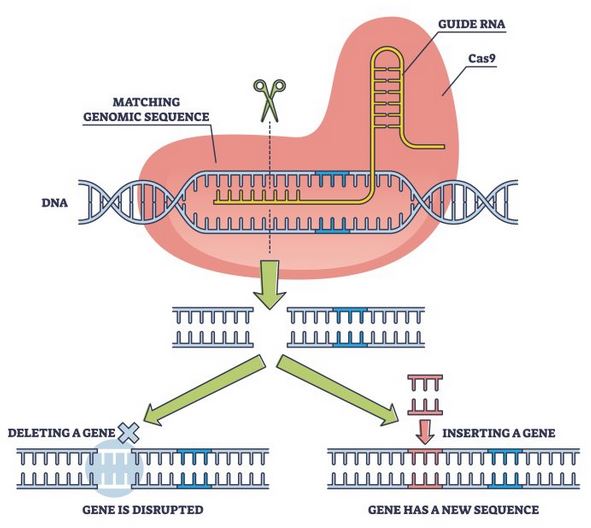Improving Gene Therapy With CRISPR: Whole Gene Insertion Techniques

Table of Contents
Challenges in Whole Gene Insertion using CRISPR
Delivering and integrating large genes using CRISPR-Cas9 presents several significant hurdles. The size of the gene itself often dictates the delivery method, and this poses inherent limitations. For example, viral vectors, commonly used for gene delivery, have limited cargo capacity. Attempting to insert large genes using vectors exceeding their capacity can lead to inefficient delivery and reduced therapeutic efficacy. Furthermore, inserting large DNA sequences into the genome carries the risk of off-target effects, potentially causing genomic instability and disrupting the function of other genes. This necessitates extremely high precision in the whole gene insertion process. Finally, the inherent low efficiency of homology-directed repair (HDR) pathways, the primary mechanism for precise gene integration, presents a significant bottleneck when dealing with large gene insertions. Overcoming these challenges is crucial for the successful development of whole gene insertion therapies. The significance of precise insertion cannot be overstated; it's essential to avoid disrupting gene function and maintain genomic integrity for safe and effective treatment.
- Size limitations of viral vectors commonly used for gene delivery. A major constraint of adeno-associated viruses (AAVs), for instance, frequently used in gene therapy, is their limited packaging capacity. This restricts the size of the gene that can be successfully delivered.
- Off-target effects and potential for genomic instability with large insertions. Large insertions increase the chances of unintended cuts or modifications at other genomic locations, potentially leading to harmful consequences.
- Low efficiency of homology-directed repair (HDR) pathways for large gene integration. HDR, the preferred mechanism for precise gene insertion, is inherently less efficient than non-homologous end joining (NHEJ), a less precise repair pathway, particularly for larger DNA inserts.
Advanced CRISPR-Based Techniques for Whole Gene Insertion
Several advanced techniques are being developed to improve the efficiency and precision of whole gene insertion using CRISPR.
Homology-Directed Repair (HDR) Enhancements
Strategies to enhance HDR efficiency are crucial for successful whole gene insertion. These strategies focus on improving the donor DNA template, employing HDR-enhancing molecules, and optimizing cellular conditions to favor HDR.
- The use of optimized donor DNA templates (e.g., longer homology arms, modified backbone sequences). Increasing the length of the homology arms flanking the gene to be inserted significantly improves the efficiency of HDR. Modifying the backbone of the donor DNA can also improve its stability and accessibility for HDR.
- Application of HDR-enhancing agents (e.g., recombination-promoting factors). Molecules such as ssODNs (single-stranded oligodeoxynucleotides) and dsDNAs (double-stranded DNAs) can enhance the efficiency of HDR by promoting the interaction between the donor DNA and the target site.
- Development of CRISPR-based systems that specifically target and enhance HDR. Researchers are developing CRISPR systems that not only cut the target DNA but also actively recruit HDR machinery, further increasing the efficiency of gene insertion.
CRISPR-Based Transposon Systems
Integrating CRISPR with transposon systems offers a powerful approach to overcome the limitations of HDR for whole gene insertion. Transposons are mobile genetic elements that can efficiently insert large DNA sequences into the genome.
- Use of piggyBac, Sleeping Beauty, and other transposons for efficient gene integration. These transposon systems possess high cargo capacity and integration efficiency, making them suitable for delivering large genes.
- CRISPR-mediated targeting of transposon insertion sites for precise gene placement. CRISPR can be used to precisely target the insertion site for the transposon, ensuring that the gene is integrated into the desired location in the genome.
- Advantages in terms of cargo capacity and integration efficiency compared to traditional HDR. Transposon-based systems offer a significant advantage over HDR in terms of both the size of the DNA that can be delivered and the efficiency of integration.
Prime Editing for Precise Gene Insertion
Prime editing is a relatively new CRISPR-based technology that offers a powerful alternative to traditional CRISPR-Cas9 for gene editing. It allows for targeted insertion without requiring a double-stranded DNA break (DSB), minimizing off-target effects.
- Advantages of prime editing in minimizing off-target effects. The lack of a DSB significantly reduces the risk of off-target effects compared to traditional CRISPR-Cas9.
- Capabilities for precise insertion of long sequences, including whole genes. Prime editing has been demonstrated to be capable of inserting long sequences, including entire genes, with high precision.
- Potential applications in gene therapy for various genetic disorders. Prime editing holds great potential for treating a wide range of genetic disorders that require the precise insertion of large genes.
Applications of Whole Gene Insertion in Gene Therapy
Whole gene insertion has significant potential in treating a wide array of genetic disorders where a simple gene correction is insufficient. These disorders often involve large gene deletions or complex mutations.
- Treatment of genetic diseases caused by large gene deletions or mutations. Conditions like Duchenne muscular dystrophy, where a large portion of the dystrophin gene is deleted, are prime candidates for whole gene insertion therapy.
- Insertion of functional genes to replace non-functional genes in inherited disorders. Many inherited metabolic disorders result from a complete loss of function of a specific gene. Whole gene insertion offers the potential to replace the faulty gene with a functional copy.
- Engineering cells for improved therapeutic efficacy (e.g., CAR T-cell therapy with enhanced functionality). Whole gene insertion techniques can be used to introduce additional genes into cells used in immunotherapy to enhance their effectiveness.
Conclusion
CRISPR-Cas9 technology has significantly advanced gene editing; however, efficiently performing whole gene insertion remains a challenge. Ongoing research focusing on improved HDR techniques, innovative CRISPR-transposon systems, and the precision of prime editing holds tremendous promise for overcoming these hurdles. These advancements pave the way for more effective whole gene insertion therapies that could revolutionize the treatment of numerous genetic diseases. Further research and development in this exciting field are crucial to unlock the full potential of whole gene insertion using CRISPR for gene therapy. Let's continue to explore the possibilities of whole gene insertion techniques to improve gene therapy and create a future with effective treatment options for numerous genetic disorders.

Featured Posts
-
 Nuevos Detalles Sobre El Precio De Las Entradas De Ticketmaster
May 30, 2025
Nuevos Detalles Sobre El Precio De Las Entradas De Ticketmaster
May 30, 2025 -
 A Retrospective On Anna Neagles Contribution To British Film
May 30, 2025
A Retrospective On Anna Neagles Contribution To British Film
May 30, 2025 -
 Dara O Briain Analyzing The Power Of Reason And Satire
May 30, 2025
Dara O Briain Analyzing The Power Of Reason And Satire
May 30, 2025 -
 Fecomercio Presidente Pleiteia Titulo De Cidadao Baiano A Ronaldo Caiado
May 30, 2025
Fecomercio Presidente Pleiteia Titulo De Cidadao Baiano A Ronaldo Caiado
May 30, 2025 -
 Raducanu Reaches Miami Open Quarterfinals
May 30, 2025
Raducanu Reaches Miami Open Quarterfinals
May 30, 2025
Latest Posts
-
 Elon Musks Awkward Saudi Encounter With Donald Trump
May 31, 2025
Elon Musks Awkward Saudi Encounter With Donald Trump
May 31, 2025 -
 Trumps Changing Stance On Musk Cnn Data Chief Explains
May 31, 2025
Trumps Changing Stance On Musk Cnn Data Chief Explains
May 31, 2025 -
 Madrid Atp 1000 Girons Victory Over Berrettini
May 31, 2025
Madrid Atp 1000 Girons Victory Over Berrettini
May 31, 2025 -
 Munich Tennis Zverev Battles Griekspoor In Bmw Open Quarter Finals
May 31, 2025
Munich Tennis Zverev Battles Griekspoor In Bmw Open Quarter Finals
May 31, 2025 -
 Zverev Vs Griekspoor Bmw Open 2025 Quarter Final Highlights
May 31, 2025
Zverev Vs Griekspoor Bmw Open 2025 Quarter Final Highlights
May 31, 2025
